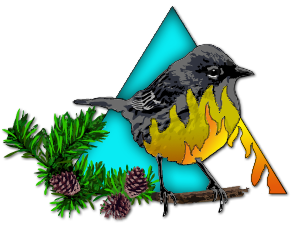Navigation

Weather, Climate, & Air Quality Research in the Lake States
Weather, Climate, & Air Quality
Historic trends and forecasting models and tools, smoke management plans and resources
| Publications | Presentations | Climate Change Resources | Weather Tools | Smoke Management |
NATIONAL OCEANIC AND ATMOSPHERIC ADMINISTRATION NATIONAL WEATHER SERVICE
FIRE WEATHER CONTACT LIST
Publications
Forecast for the southern boreal forest: an increasing incidence of severe disturbance. 2008.
Weather guide for the Canadian forest fire danger rating system. 2008.
Impacts of climate change on fire activity and fire management in the circumboreal forest. 2009.
Forest fire occurrence and climate change in Canada. 2010.
Synthesis of knowledge: fire history and climate change. 2011.
Working with the Great Lakes Fire and Fuels Information System Tools in Lake States Fire Management. 2011.
Forest adaptation resources: climate change tools and approaches for land managers. 2012.
Climate change and disruptions to global fire activity. 2012.
Spatial and temporal drivers of wildfire occurrence in the context of rural development in northern Wisconsin, USA. 2012.
Presentations
Elements of the National Weather Service Fire Weather Forecast (March 2014)
Developing adaptive silvicultural strategies in the context of climate change (Dec 2012)
Climate change and forest ecosystem vulnerability in the Lake States: how to account for wildfire? (November 2012)
Making Sense of Wildland Smoke (April 2012)
Unlocking the mystery of weather forecasts (Feb 2012)
Web Based Fire Weather for the Lake States (May 2011)
Climate Change Resources
USFS Northern Institute of Applied Climate Science
WI Initiative on Climate Change Impacts
Ohio State University Changing Climate
Northwoods Climate Change Response Framework. Established by the Northern Institute of Applied Climate Science, this project will create and deliver climate change science information and tools for “climate smart” conservation and management. Included are a Climate Change Tree Atlas, several basic Climate references, and a Climate Change Resource Center.
Climate Change Response Framework
Climate Change Resource Center
USGS Geodata Portal (downscaled climate data)
Weather Tools
TCL Weather Calculator. Software for download.
High Plains Regional Climate Center provides precipitation and temperature summaries for the coterminous US, the midwest, and (under the "High Plains" region) Minnesota. Summaries from the last seven days up to the last three years are updated daily.
Eastern Area Coordination Center (EACC) Predictive Services. Provides fire weather information and forecasts as well as wildland fire assessment and vegetation indices.
Great Lakes Fire & Fuels Weather Forecast/Observation Comparison Tool. Instructions found here highlight access to a graphing tool that displays comparisons of surface weather observations from Remote Automated Weather Stations (RAWS), the Real Time Mesoscale Analysis (RTMA) grids, and the National Forecast Database forecasts for those specific locations.
Surface Weather Maps
CFFDRS Grids for CONUS using RTMA
CFFDRS Grids for Lake States using RTMA
Smoke Management
Smoke Management Plans for the Lake States
Michigan (plan last updated April 2007)
Minnesota (plan last updated January 2016) and Minnesota SMP Agreement 2015
Wisconsin (plan last updated January 2011)
Other Smoke Management Resources
Michigan State University and USFS web site for smoke modeling and monitoring research
MODIS Today Satellite Imagery
NOAA Satellite Hazard Mapping System Fire and Smoke Product
NWS Air Quality Forecast Guidance
NWS Fire Weather Homepage
NWS Hourly Weather Graph (NWS Marquette example)
NWS Graphical Forecast - Fire Parameters (NWS Marquette example)
Smoke Specific Burn Category and Dispersion Tables (NWS Greenville-Spartanburg, SC)
HYSPLIT Trajectory Runs via NWS Spot (Survey)
HYSPLIT Wildfire Information
Web-based and downloadable HYSPLIT Program
BlueSky Playground
The Fuel Characteristic Classification System (FCCS) developed by the Fire and Environmental Research Applications team (FERA), offers consistently organized fuels data along with numerical inputs to fire behavior, fire effects, and dynamic vegetation models.
Digital Photo Series is another product of FERA that includes a detailed inventory of 43 photo series containing a total of 457 sites in database form to enable searching, downloading, and eventually side-by-side comparisons and customized site generation.
First Order Fire Effects Model can derive fuel loads from Fuel Loading Model and a variety of vegetation classifications to model fuel consumption and smoke emissions, among other fire effects.

.png)